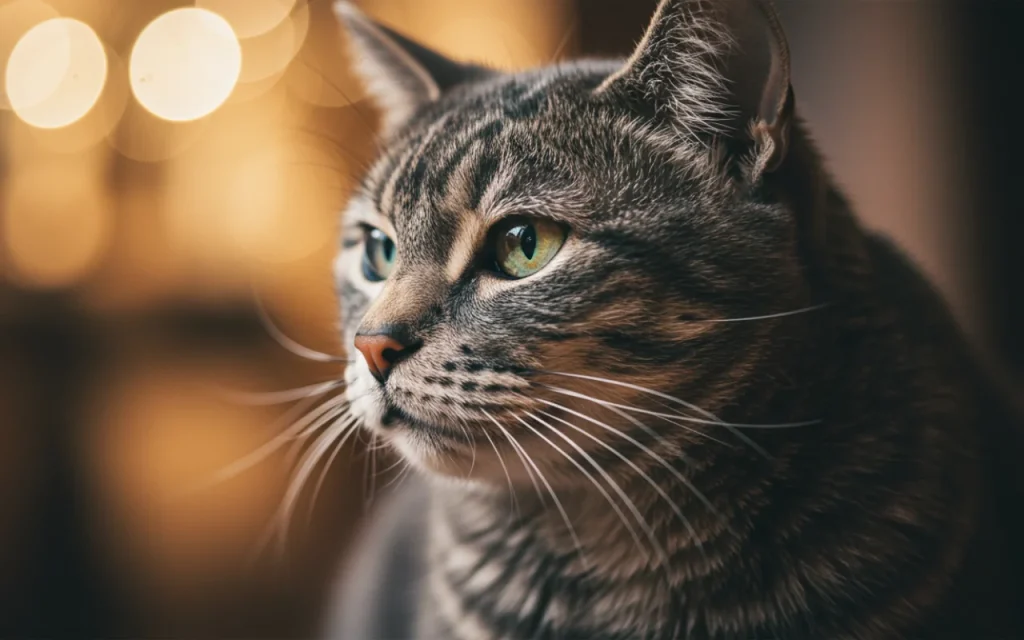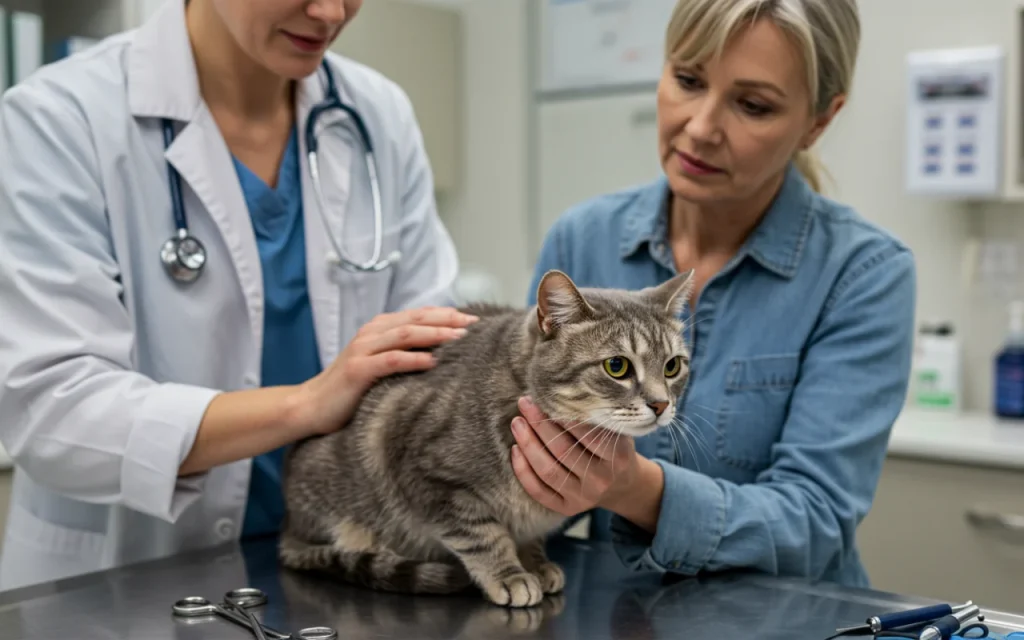There are certain appointments that stick with you. A few weeks ago, a long-time client, Sarah, brought in her 18-year-old cat, Jasper. I’ve known Jasper since he was a scrappy kitten who tried to climb my leg. But this visit was different. There was no specific ailment Sarah could point to. “He just seems… lost, Dr. Miller,” she told me, her voice heavy with worry. “He sometimes gets stuck in a corner, just staring at the wall. And at night, he starts crying this mournful, lonely cry I’ve never heard before.”
As she spoke, I had a feeling I knew the path we were heading down. It’s a conversation I have with a gentle heart, because it’s not about a simple infection or a lump; it’s about the very essence of who our cat is. We were likely looking at Feline Cognitive Dysfunction, or FCD. It’s a mouthful, I know. The easiest way to think of it is as a condition similar to Alzheimer’s in people. And the first, most important thing to know is that it’s a real, medical diagnosis. Your cat isn’t being difficult; their brain is changing.
When the World Feels a Little Jumbled
The signs of FCD are so often subtle at first, easily dismissed as just “getting old.” But they are more than that. The most common thing I hear, just like with Jasper, is disorientation. Does your cat ever seem to get lost in a familiar house? Do you find them staring blankly at a wall or a piece of furniture as if they’ve never seen it before? This confusion is a hallmark of the condition. Their internal map of the world, once so precise, is starting to fray around the edges.
This confusion can also change how they connect with you. Some cats, once independent, become incredibly clingy and anxious, needing constant reassurance. Others, once cuddly, may become withdrawn or even irritable, no longer seeking out the affection they once loved. There’s no rhyme or reason to it; it’s just the wiring getting crossed. They aren’t rejecting you. In my experience, they’re just struggling to process the social cues they’ve known their whole lives.

A Vet’s Approach to Finding Answers
When a client describes these symptoms, the first thing I do is slow everything down. There is no single blood test or scan that definitively says “Yes, this is FCD.” Instead, it’s what we call a “diagnosis of exclusion.” It’s a piece of careful detective work. My job is to first rule out every other medical condition that can mimic the signs of cognitive decline.
And believe me, the list of impostors is long. That new habit of missing the litter box? It could be arthritis making it painful to climb in, or a urinary tract infection, or even kidney disease. The nighttime yowling? That can be a classic sign of hyperthyroidism or high blood pressure. Changes in appetite or activity could be linked to dental pain. So before we can even consider FCD, we have to run the tests. We’ll do a full physical exam, checking their joints and their eyes. We’ll run a senior blood panel and check their urine. We are, essentially, making sure the “hardware” is all working before we can say the “software” is having trouble.

A New Chapter of Care and Comfort
Once we’ve ruled everything else out and arrived at a diagnosis of FCD, the next question is always, “So, what can we do?” It’s here that I have to be honest: there is no cure. But that does not mean there is no hope. Our goal shifts from curing to managing. It’s about improving quality of life and supporting their brain as best we can.
It starts with simple things at home. Environmental enrichment is key. Keeping the furniture in the same place helps with their mental map. Adding extra litter boxes in easy-to-access locations can solve house-soiling issues. Maybe a ramp to their favorite sunny spot on the sofa. We also want to keep their minds gently stimulated—not with stressful new toys, but with regular, gentle interaction and maybe a food puzzle if they’re up for it. Routine becomes their anchor.
From a medical standpoint, we have options. There are special prescription diets formulated with antioxidants and fatty acids to support brain health. I’ve seen wonderful results with nutritional supplements containing things like SAMe or omega-3s that can help protect nerve cells. In some cases, if anxiety is severe, we can even prescribe medications to help them feel calmer and regulate their sleep cycles. It’s a case-by-case plan, a partnership between me and the owner, to give that cat the most comfortable and peaceful golden years possible. It’s a new chapter of care, one defined by patience and deep love.






